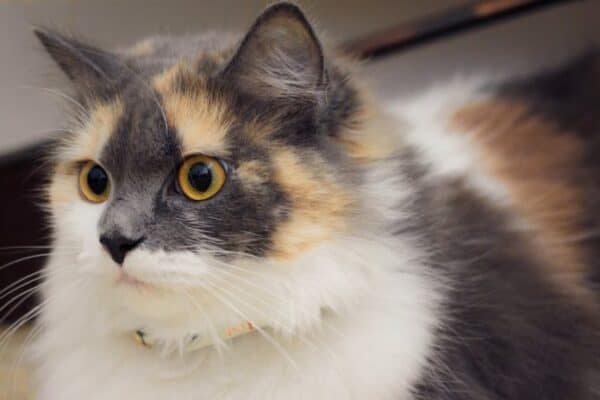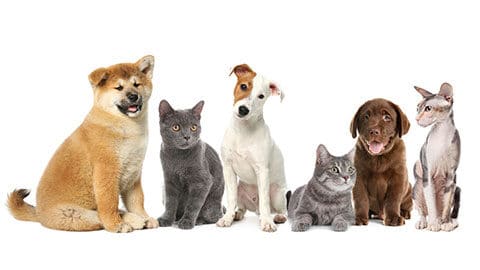
How To Get Your Cat Off “Kitty Crack” And Slim Down
For all of the 7 ½ years I had my own show on the Martha Stewart channel of Sirius satellite radio, I focused on feline health, especially as it related to nutrition. From my years of research for writing The Cat Bible: Everything Your Cat Expects You to Know, (research which continues to this day with my NPR radio show DOG TALK (and Kitties, Too!) the primary advice I learned from feline experts and veterinarians was that dry food was not the optimal (or even “correct”) food for cats, who are obligate carnivores. They must eat meat.
Many of the physical ailments cats develop (obesity being at the top of that list) can be attributed to feeding dry food, which I came to call “kitty crack” because of its unhealthy effects on cats, many of whom actually became “hooked” on it and wouldn’t eat the delicious, nutritious food in cans. All the advice below comes from many knowledgeable sources about cat health, in particular feline-only veterinarian Dr. Elizabeth Hodgkins. She is now retired but was the official veterinary adviser on Cat Chat and is the author of Your Cat, an invaluable book about cat health. Many recommendations come from hearing the challenges and triumphs of my “Cat Chat” listeners over the years, who got their cats off kitty crack, onto wet food, and the cats not only lost weight but also stopped shedding and became more playful and affectionate.
More tips for dealing with cravings for kitty crack (and a medical explanation for the whole topic of obesity) can be found in Dr. Elizabeth’s book Your Cat and in my book The Cat Bible: Everything Your Cat Expects You to Know.
Preliminary Steps to Kitty Weight Loss
- Take your cat for a full check up at the vet before starting a weight loss regimen. Make sure the vet gets a urine and blood sample as well as physical exam. It is highly unlikely that a medical condition is the cause of the cat being overweight, but you have to rule that out, as well as any other underlying health problem that needs attention..
- As soon as you get a clean bill of health, remove ALL dry food from your home. Physically remove it so your cat can’t even smell it. Give it to a shelter or a TNR group that manages community cat colonies.
- Kibble can be so addictive for some cats they will try to claw their way into a pantry where you’ve put the food aside. This addiction is a clue to how dry cat food has been created to be craved by cats, often aggressively, even though it is fundamentally ill-suited to their bodies.
- The “transition” to wet food can be easy-peasy for many cats, but very difficult for others who are really “hooked” on it.
- Some cats are so addicted to “kitty crack” that they will refuse to eat even the most delicious canned cat food.
- Cats should not go more than 24 hours without food, so you have to think of this as “kitty rehab” and actively help your cat to learn how to eat better food that is good for him.
Instructions On Switching to Wet Food
“Cold turkey” is the most effective way to get cats off kitty crack. Not so much as one piece of kibble should pass their lips! Think of this as AA or rehab, which for some cats it will be.
If you are already feeding some canned food it should be easier to make the transition. Be aware that your cat may very well still “look for” and crave dry food (just the way a child might beg for the candy bars you’ve made available previously). Remove all dry food from the premises and feed only wet food.
Be prepared with an array of styles of cat food (pate, slices in gravy, chunks,etc) and a choice of underlying ingredients (chicken, fish) so you can discover what canned food you cat will like best.
After the transition to wet food only, if your cat cries and begs [especially at night] think of this as the cat being in rehab, craving the thing that is bad for him. After or between meals, you can give him little pieces of deli meat, or pieces of fish, chicken or beef to satisfy that craving.
Use food that is actually good for him to help him get over the food that is unhealthy for him. Protein can help satisfy his hunger cravings and contribute to weight loss.
Freeze-dried protein treats of any kind work well too, and provides some of the crunchiness that the cat may have become accustomed to.
Potential Dangers of a Weight Loss Program
The liver of a fat cat is surrounded by excess fat — and is already struggling to process the fat his body is shedding on the diet. This puts a fat cat at risk of hepatic lipidosis (“fatty liver disease”) which in simple terms is what happens if the intake of calories is not steady, alongside the fat that is being lost.
This is no trivial matter: you have to carefully manage the cat’s intake of food as the weight slowly drops. Hepatic lipidosis can actually kill a cat.
However, keep in mind the risk/reward of giving up kitty crack and losing weight, since obesity itself is now called a disease — and therefore in itself is also a life-threatening condition.
Fast weight loss is unsafe for any cat, but especially for a fat cat..
Seriously obese cats are at serious risk on a weight loss program! The cats who most need to lose weight have to do it very slowly and steadily.
Slow and Steady Wins the Race
Consult with your vet before you put a very fat cat on a diet and continue to communicate with the vet during the months of the diet to make sure the weight comes off slowly and the cat’s body is handling it well..
If your veterinarian does not understand the vital health importance of getting your cat slimmed down and onto canned food, please bring him/her a copy of Dr. Hodgkin’s book!
Optimal loss is slow and steady: which is usually considered a loss of 4 to 16 oz. a month. Slow and steady wins this race.
No cat should go more than 24-36 hours without eating. This is true at any time (and can be a sign of a medical problem). However, the need to eat regularly is especially true when transitioning a cat to wet food. They must not go without any food at all. Eating protein actually balances their metabolism and helps the weight loss process.
If your cat is refusing canned food or is constantly crying in hunger (from no longer having free access to kitty crack) offer him pieces of cheese, chicken, beef, fish on top of canned food or beside it — until he gets the idea of how tasty this really is!
At no time should your cat go more than 24-36 hours without food. This is especially true for fat cats.
Make sure that your fat cat is eating two meals of canned food a day — and tidbits of human protein or even more canned food if he is begging.
For a better understanding of the seriousness of cat obesity — and how to manage a weight loss program — Dr. Hodgkins’ book Your Cat: Simple New Secrets to a Longer, Stronger Life is essential reading. Dr. Hodgkins has spent her lifetime as a feline-only vet working to convince cat owners of the harm of dry food for cats and the necessity of feeding wet food only to the obligate carnivore.
—Tracie Hotchner
(Have a comment? Share it on Facebook.)
photo credit: stratman² (2 many pix!) Huge Eyes (** Explored) via photopin (license)

